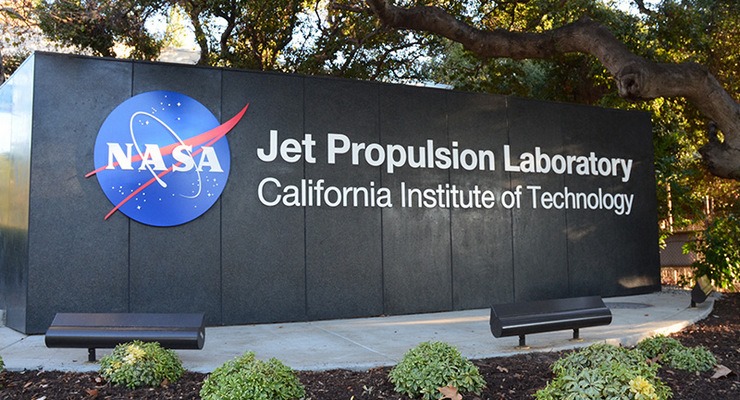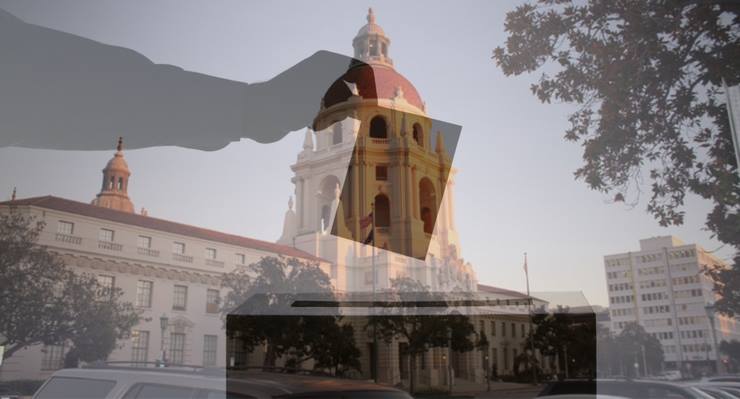
While scientists around the world are confined to their homes during the COVID-19 pandemic, Earth-observing satellites continue to orbit and send back images that reveal connections between the pandemic and the environment.
“Satellites collect data all the time and don’t require us to go out anywhere,” said Hannah Kerner, an assistant research professor at the University of Maryland in College Park. Kerner is one of eight researchers recently awarded a rapid-turnaround project grant supporting investigators as they explore how COVID-19 lockdown measures are impacting the environment and how the environment can affect how the virus is spread.
NASA’s Earth Science Division manages this and the other projects that find new ways to use Earth-observing data to better understand regional-to-global environmental, economic, and societal impacts of the COVID-19 pandemic.
The newest group of projects includes six that are looking to satellite images to help reveal how COVID-19 lockdown measures are impacting food security, fire ecology, urban surface heat, clouds and warming, air pollution and precipitation, and water quality and aquatic ecosystems. Two projects are exploring how the environment could be impacting how the virus is spread by monitoring dust and weather.
Yulia R. Gel, a professor at the University of Texas at Dallas, and Huikyo Lee, a scientist at NASA’s Jet Propulsion Laboratory (JPL) in Pasadena, along with other collaborators, want to help clarify what environmental factors could impact a second wave of COVID-19 cases and determine how certain we can be with those conclusions.
Gel’s interdisciplinary team, according to a story by NASA’s Elizabeth Goldbaum appearing at spacecoastdaily.com, is studying whether surface air temperature and humidity are impacting transmission rates, and, if they are, how they are doing it. It’s also teasing out a potential link between aerosols and COVID-19 severity and mortality.
Gel and her collaborators are using weather data from the Atmospheric InfraRed Sounder on the Aqua satellite and Cross-track Infrared Sounder on the Suomi NPP satellite. The team will obtain aerosol data from the Multi-angle Imaging SpectroRadiometer and MODIS and use machine learning algorithms and advanced analyses to track the dynamics of the virus’s spread and its mortality rate over space and time.
More specifically, her team is using geometric deep learning algorithms, coupled with topological data analysis, which allow it to track COVID-19 transmission patterns that are driven, for instance, by different population characteristics, like age, gender, ethnicity, and income, as well as environmental factors. The advanced tools allow the team to consider factors that are not accessible using conventional approaches based on geographic proximity.
Gel aims to provide a powerful software tool to help predict the seasonal COVID-19 progression on a regional to global scale, while quantifying a broad range of associated uncertainties.
As COVID-19 lockdowns went into effect, the U.S. Forest Service temporarily suspended all of its intentional or prescribed, burns on federal lands in the Southeast in March, and state agencies in Mississippi, South Carolina, and North Carolina followed suit.
Ben Poulter, a research scientist at NASA’s Goddard Space Flight Center in Greenbelt, Maryland, is using the Visible Infrared Imaging Radiometer Suite (VIIRS) on NASA and NOAA’s Suomi NPP satellite, as well as data from MODIS, to track fires across the country and better understand how COVID-19 social distancing policies, like federal travel restrictions, have affected both prescribed burns on the East Coast and wildfires in the West.
Ultimately, his team wants to better understand how fewer fires in the Southeast could be affecting biodiversity, since some species rely on fires to thrive, and causing fuels to accumulate in vegetation, potentially leading to more dangerous wildfires in the future.
On the other side of the country, the team is examining how COVID-19 policies are complicating fire suppression. As firefighting agencies have introduced social distancing practices to minimize the spread of COVID-19, like eliminating large camps of firefighters living in close quarters, Poulter said, “it may become more difficult to fight fires in the Western states.”
The team is also looking at how the total number of fires across the country could affect atmospheric chemistry. It will work with air quality scientists to determine if there will be an overall net increase or decrease in total carbon dioxide, among other pollutants, from wildfires in the West and prescribed fires in the East.
This year was looking to be a relatively normal year for crops until the pandemic and associated lockdown policies happened. Reduced air and ground travel caused the demand for ethanol to plummet, which caused corn prices to decline. Lockdown policies also made it harder for officials from the U.S. Department of Agriculture (USDA) to travel to farms and collect information about crop planting, progress, and conditions.
The subsequent lack of public information about crops caused uncertainty and volatility in agricultural markets and prices as growing seasons progressed. “Markets want to know how much of a specific kind of crop to expect,” said Kerner of the University of Maryland.
Kerner and her team are looking to satellite data from NASA’s and the U.S. Geological Survey’s Landsat, ESA’s (the European Space Agency) Copernicus Sentinel-2, NASA’s Moderate Resolution Imaging Spectroradiometer (MODIS) aboard the Terra and Aqua satellites, and Planet’s satellites to help supplement USDA’s information.
“We’re using satellite data and machine learning to map where and which crops are growing,” Kerner said. Specifically, they’re monitoring key commodity crops, which are corn and soybeans in the U.S. and winter wheat in Russia.
For more on this story, visit spacecoastdaily.com.














 4 comments
4 comments


